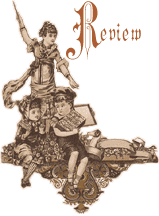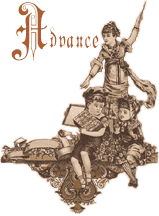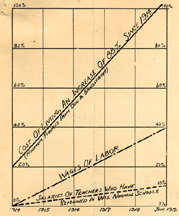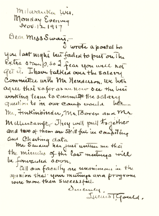Frequently an issue in higher education, instructors' salaries became a serious point of contention in the Normal School system in the post WWI years. Stagnant wages throughout the war period became unbearable as prices continued to rise. Instructors from all of the state Normal Schools lobbied the legislature and governor for increased funds. Their efforts were defeated several times but the teachers continued their fight. For its part, Oshkosh Normal chose Rose Swart, then in her seventies, to lead them into legislative battle.
click image to enlarge
Graph used by Swart to demonstrate the need for higher pay, 1918.
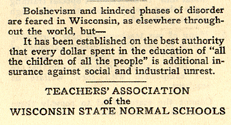
In
a pamphlet, the Teacher's Association appealed to the public's growing
fear of Russian communism to garner support for their wage demands, 1918.
In
addition to cost of living increases, it was clear to Swart and others
that their salaries were far less than those of Normal schools in surrounding
states. In fact, many of the teachers were leaving Wisconsin for better
paying positions elsewhere, receiving on average a $500 increase (or roughly
25%-40% of their Wisconsin salary). There was added concern among the
instructors that the meager Wisconsin wages would lower the quality of
the teaching staff. To maintain the quality of instructors and to stave
off a greater exodus, Swart and leaders across the state demanded at least
an immediate increase of 20%. Eventually, the Normal instructors received
an increase of only 11%. Despite this limited success, it is clear that
the contribution of Oshkosh's own Miss Swart to the fight was appreciated
by Normal school leaders across the state.
Letter
from Lucius Gould instructor of Geography and the Milwaukee Normal School
representative on the board of the Association of Wisconsin Normal School
Teachers, 1917. In the letter Gould thanks Swart, the only woman on the
board, for presentations she made in support for the increase in instructor
wages.
